Association Between Low Muscle Mass and Cognitive Decline
 Dementia is a life altering disease and affects millions of people and their families worldwide negatively. But in a new study, researchers have found a modifiable factor that could possibly lower the risk of the advancement of this condition before it becomes irreversible. Their work highlights the link between muscle mass and rapid cognitive decline.
Dementia is a life altering disease and affects millions of people and their families worldwide negatively. But in a new study, researchers have found a modifiable factor that could possibly lower the risk of the advancement of this condition before it becomes irreversible. Their work highlights the link between muscle mass and rapid cognitive decline.
Little has been known about the association between low muscle strength and the development of dementia. For the first time, this new study shows that having low muscle mass is significantly linked to a rapid cognitive decline.
For the study, data was used from an ongoing Canadian Longitudinal Study on Aging or CLSA. It has collected a substantial dataset consisting of body composition and various cognitive tests from 30,000 persons over a 3-year period that was administered in person. Three domains were used in the study – executive function, memory and psychomotor speed. The participants were all over 65 years of age and were asked if having low muscle can predict eventual cognitive decline based upon the three domains.
The findings showed that having a low muscle mass did link with a more rapid decline in the domain of executive cognitive functions over a three year period compared with a normal muscle mass. The other domains of memory and psychomotor function loss were not affected. This is important because executive functions, on a daily basis, help a person stay attentive, make decisions and organize thoughts.
This is crucial information because muscle mass can be increased through exercise, especially resistance training. And combined with good nutrition and a sufficient amount of protein in the diet, muscle mass can be maintained over the years of a persons life. Muscles provide proteins that help handle various bodily processes as well as a major role in strength and physical functioning. They also deliver molecules to the brain. When a person exercises and builds muscle mass, more blood flow is delivered to the brain that helps the executive function process.
People can be measured for low muscle mass to help identify if they may have an increased risk of cognitive decline. But further research is needed to see if gaining or maintaining muscle can attenuate cognitive decline as a person ages, and, if so, what the mechanisms would be.
To view the original scientific study click below:
Association of Low Muscle Mass With Cognitive Function During a 3-Year Follow-up Among Adults Aged 65 to 86 Years in the Canadian Longitudinal Study on Aging



 Exercise is a great way to keep fit and stay healthy but now a new study has determined that the time of day to exercise and get the best results are different for men and women. The research team at Skidmore College performed a study consisting of a 12-week exercise program. The participants were 27 women and 20 men ranging in age from 25-55 years old. Because of this large number, they were split into workout groups in the morning and evening.
Exercise is a great way to keep fit and stay healthy but now a new study has determined that the time of day to exercise and get the best results are different for men and women. The research team at Skidmore College performed a study consisting of a 12-week exercise program. The participants were 27 women and 20 men ranging in age from 25-55 years old. Because of this large number, they were split into workout groups in the morning and evening. While it has been known that eating avocados is good for you, there has now been a new study detailing how they can improve unhealthy cholesterol levels. This has been the most extensive and largest study to date on the overall effects of health by consuming avocados including the length of the study period and the large number of participants.
While it has been known that eating avocados is good for you, there has now been a new study detailing how they can improve unhealthy cholesterol levels. This has been the most extensive and largest study to date on the overall effects of health by consuming avocados including the length of the study period and the large number of participants.  Longevity research has commonly used a nematode worm called caenorhabditis elegans in studies. This is due to its genetic makeup being similar to humans and it has a relative short lifespan, usually 4 weeks or less. Earlier research to improve these worms lifespan resulted in various interesting outcomes by modifying their rapamycin and insulin signaling pathways, which resulted in a 30% and 100% increase in their lifespan, respectively. The researchers then wondered what would happen from modifications made to both of these pathways at the same time.
Longevity research has commonly used a nematode worm called caenorhabditis elegans in studies. This is due to its genetic makeup being similar to humans and it has a relative short lifespan, usually 4 weeks or less. Earlier research to improve these worms lifespan resulted in various interesting outcomes by modifying their rapamycin and insulin signaling pathways, which resulted in a 30% and 100% increase in their lifespan, respectively. The researchers then wondered what would happen from modifications made to both of these pathways at the same time.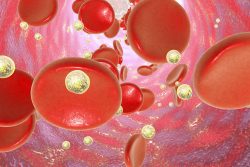 Bioengineers have discovered a new strategy that can restore stem cells that have been damaged and also enable them to grow new tissues again. The novel drug delivery system might help infants who were born from pregnancies that were complicated.
Bioengineers have discovered a new strategy that can restore stem cells that have been damaged and also enable them to grow new tissues again. The novel drug delivery system might help infants who were born from pregnancies that were complicated.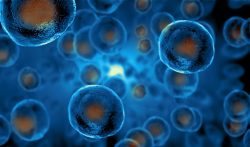 By using a mouse model, researchers from the Univ. of Copenhagen have developed an alternative route for cells to follow to build organs. They used this information to attain a stem cell that is new and could possibly generate a supply of organs.
By using a mouse model, researchers from the Univ. of Copenhagen have developed an alternative route for cells to follow to build organs. They used this information to attain a stem cell that is new and could possibly generate a supply of organs.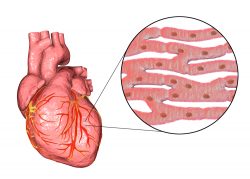 A team has reported new technology that will not only repair heart muscle cells in mice, but also can regenerate them after a heart attack. The groundbreaking discovery has the possibility to develop into an important clinical strategy to treat humans who have heart disease.
A team has reported new technology that will not only repair heart muscle cells in mice, but also can regenerate them after a heart attack. The groundbreaking discovery has the possibility to develop into an important clinical strategy to treat humans who have heart disease. A team has demonstrated an association between circadian rhythms, health, diet, and lifespan. It was an unexpected discovery that the fly eye actually drives the process of aging.
A team has demonstrated an association between circadian rhythms, health, diet, and lifespan. It was an unexpected discovery that the fly eye actually drives the process of aging.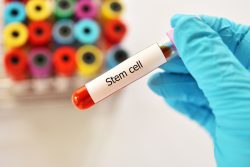 New research from the Univ. of Virginia could assist scientists in understanding how specific genes affect the bodies development. It could show how they play in diseases that are developmental and could possibly help develop new therapies.
New research from the Univ. of Virginia could assist scientists in understanding how specific genes affect the bodies development. It could show how they play in diseases that are developmental and could possibly help develop new therapies.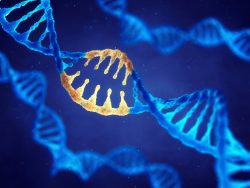 A team has investigated genes that could be linked to lifespan and has found specific characteristics of certain genes. They have discovered that there are 2 regulatory systems that control gene expression. They are the pluripotency and circardian networks and are crucial to longevity. This information has important implications in the understanding of the evolution of longevity and also in offering new objectives to combat diseases that are age related.
A team has investigated genes that could be linked to lifespan and has found specific characteristics of certain genes. They have discovered that there are 2 regulatory systems that control gene expression. They are the pluripotency and circardian networks and are crucial to longevity. This information has important implications in the understanding of the evolution of longevity and also in offering new objectives to combat diseases that are age related.